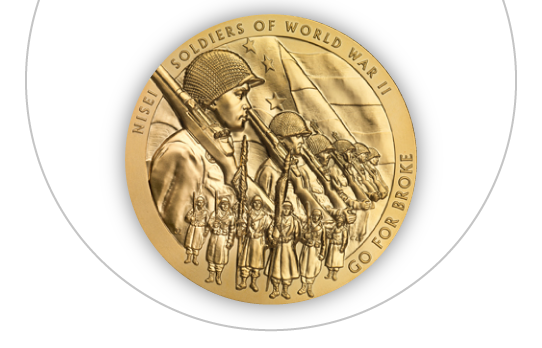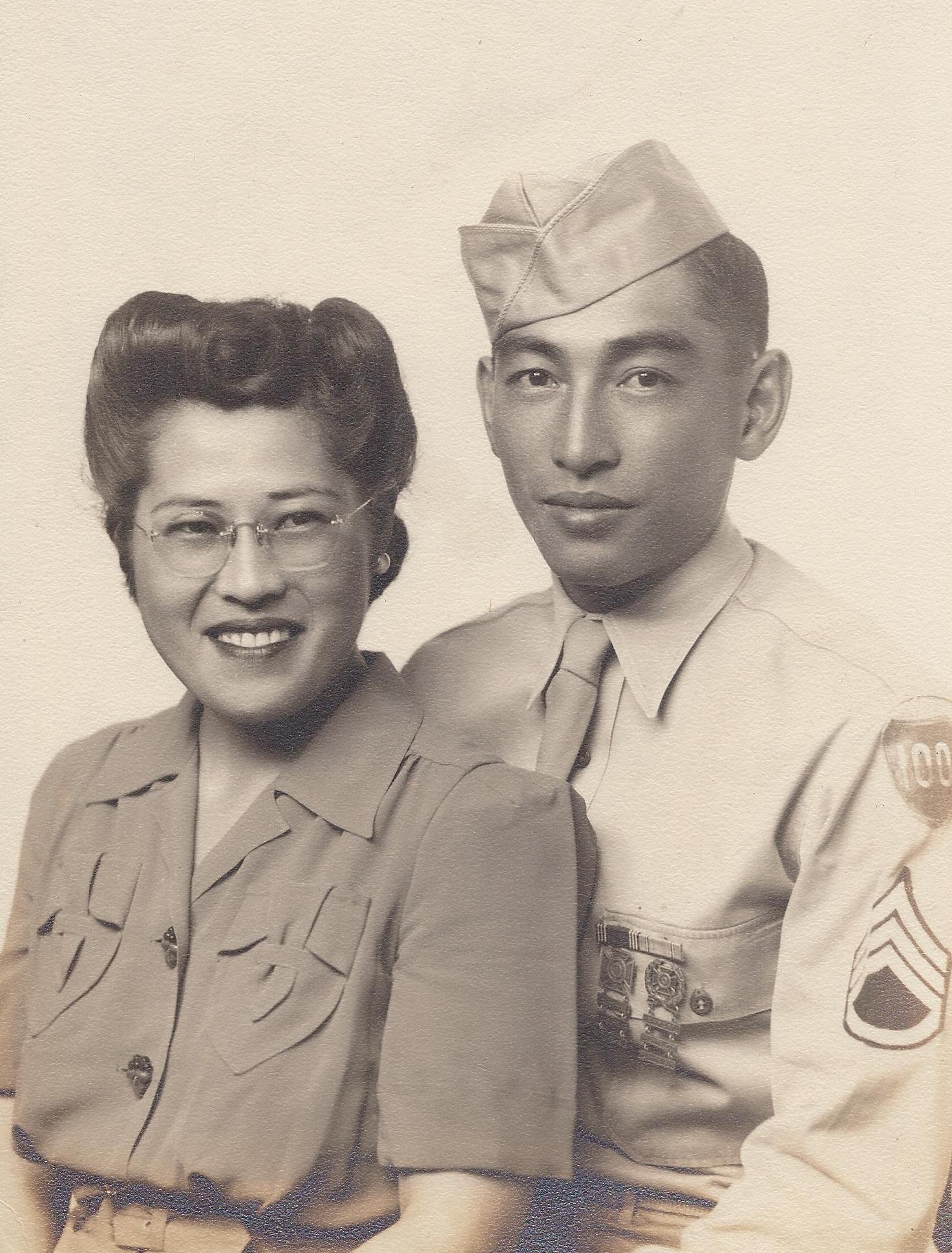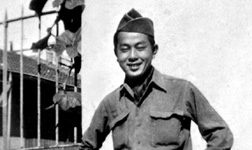Second Lieutenant
George A. Doi
Quartermaster Company
100th Infantry Division
1915 - 1989
- Citizenship
- Courage
- Perseverance
- Respect
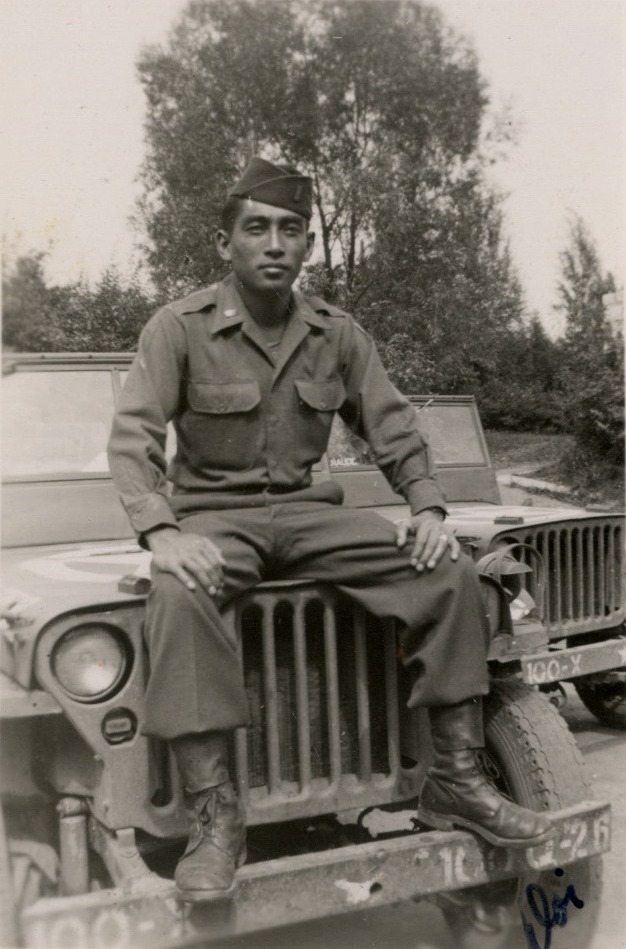
Grandfather of Olympic Gold Medalist
When US Olympic ice skater Kristi Yamaguchi won her Gold Medal in 1992, a special person in her life was missing: her grandfather, George.
Although he had died four years earlier, she still could see his wide smile and feel his support.
Many things about him, however, remained a mystery to her until much later.

Kristi Yamaguchi, 1992 US Olympic Gold Medalist Ice Skater

Left: George & Frank Doi, 1924; Right: George with his brother and parents in San Diego, year unknown
For instance, why did Grandpa George cry out in his sleep in the middle of the night? What from his past caused these nightmares?
In photos, his childhood seemed idyllic. George was born in 1915 near the Pacific Ocean in San Diego to Japanese immigrants. He was the elder son and big brother to Frank.
He studied engineering at the University of Southern California before being employed as a mechanic at a garage in San Diego. During this time, his father, Bunjiro, passed away, leaving George head of the family.
At age 26, he was inducted into the US Army on September 23, 1941. His life
would be changed forever.

High school photo of George A. Doi
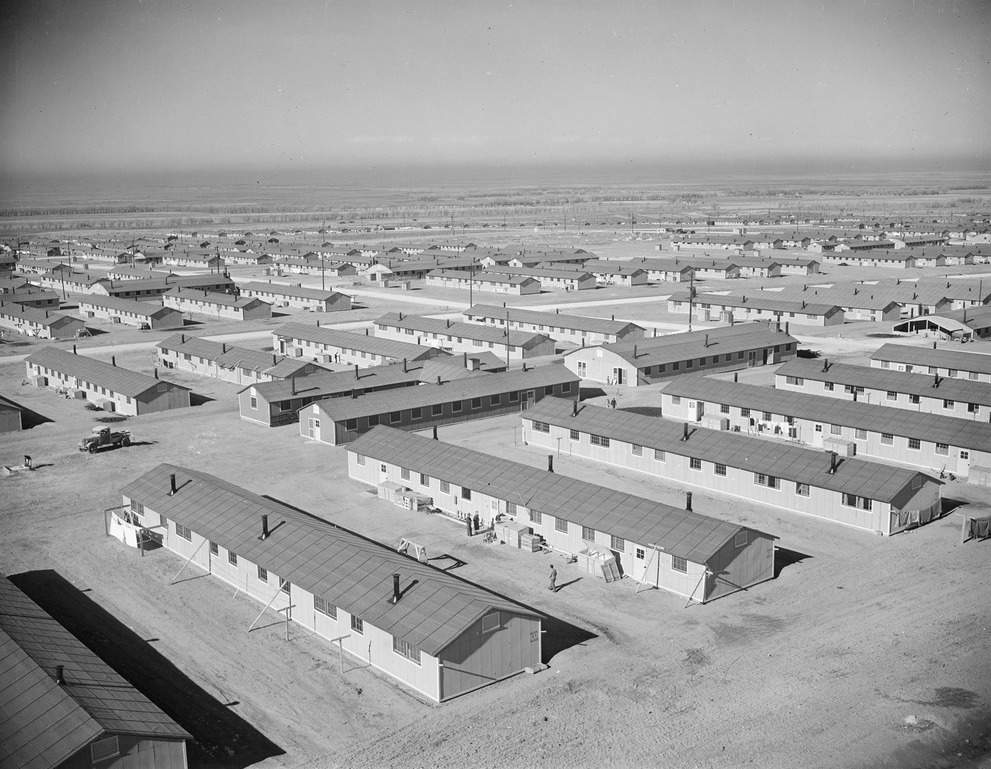
Aerial view of Amache concentration camp
US Entry into World War II
With the bombing of Pearl Harbor on December 7, 1941, the US officially entered World War II.
While other Nisei in the Armed Forces were discharged from service because of their Japanese ancestry, George was not. In fact, surprisingly, he was promoted two times in 1942 and 1943—to sergeant and staff sergeant.
Meanwhile, his widowed mother, Tokue, and brother, Frank, were sent to Amache concentration camp in Granada, Colorado.
In 1943, George married Kathleen, who would become Kristi's grandmother. She had resettled in Illinois after receiving a special release clearance from Heart Mountain concentration camp.
The newlyweds didn’t have much time together. George was assigned to the Army Specialized Training Program and sent to New York to study electrical engineering.
Unable to find work in a hostile environment, Kathleen eventually returned to Heart Mountain.
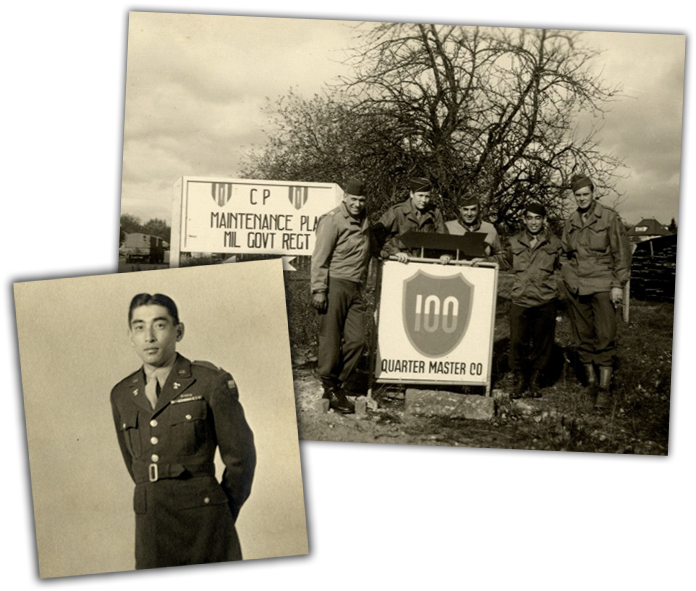
Left: George Doi; Right: members of the 100th Quartermaster Company
In March 1944, George was reassigned as a replacement for combat units soon to deploy to Europe.
With education and experience as a mechanic and a rank of staff sergeant, he was chosen for the 100th Infantry Division’s Quartermaster Company. Quartermaster units usually encompass three truck platoons, each with 16 2 ½-ton trucks.
George was unique in that he did not serve in all-Nisei segregated units as his brother Frank eventually would. Instead he was a lone Nisei standing alongside white comrades.
Service in Europe
In October 1944, George landed in France with the 100th Infantry Division. Fighting was fierce around the strategic Vosges Mountains. The 100th joined the Seventh Army in attempting to liberate the ancient French citadel town of Bitche, near the German border.

100th Infantry Division Flag
Back in the US, Kathleen was pregnant with the Dois' first child. She moved to the Amache camp in Granada, Colorado, where her father and George’s mother were incarcerated.
On New Year’s Day, January 1, 1945, she gave birth to Carole Doi, “Miss 1945 of Amache.”
Decades later, Kristi Yamaguchi would be born to Carole.
George became a new father, but he had to focus on keeping himself and his men alive. During his six months in combat, his platoon lacked an officer. George filled in as platoon commander.
On March 31, 1945, the division crossed the Rhine River to Germany to aid in the capture of two cities, Heilbronn and Stuttgart. George and his platoon had engaged in 163 consecutive days of fighting.
This harrowing period would contribute to the nightmares he would have for the rest of his life.
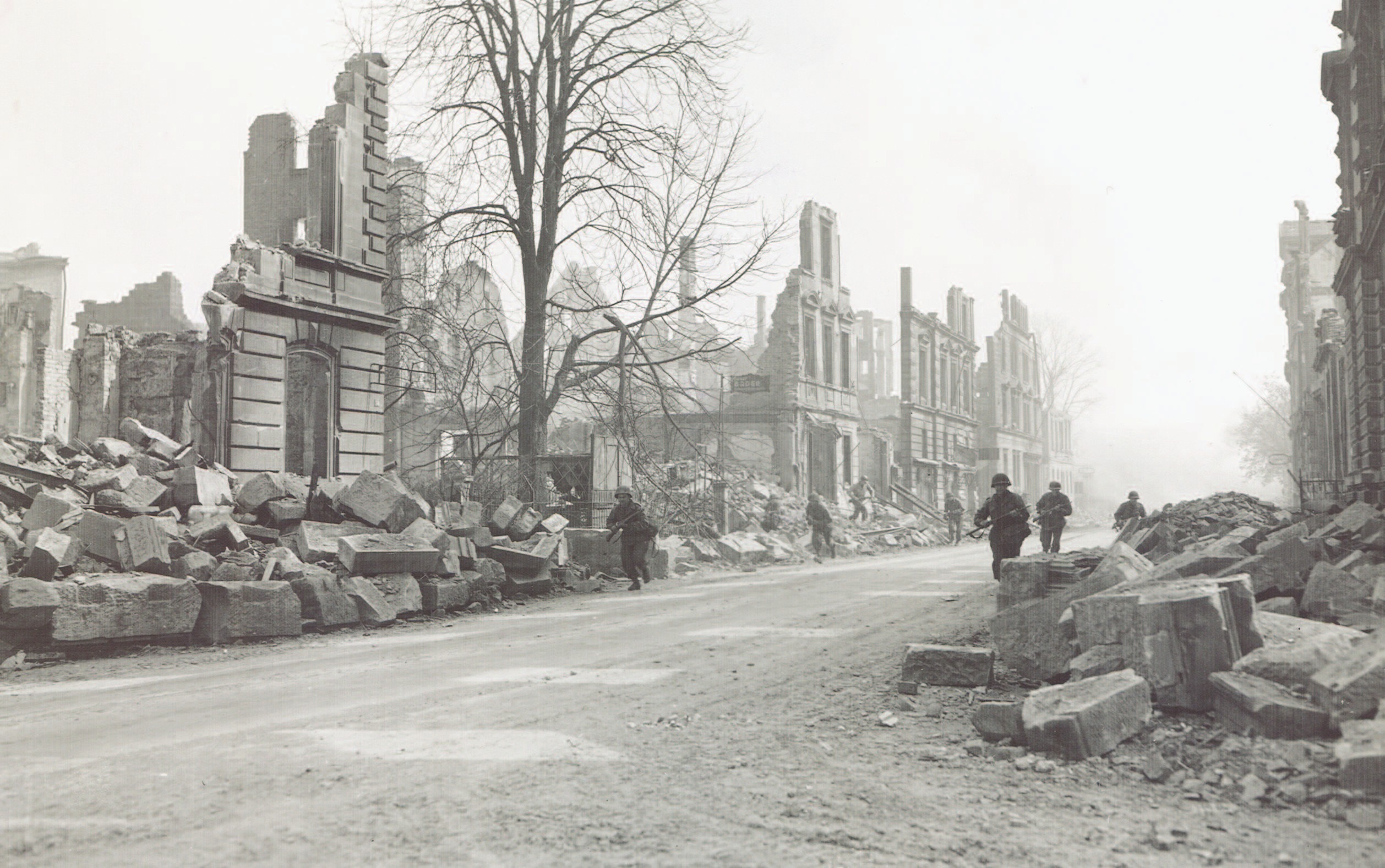
US soldiers of the 100th Infantry Division fighting in what remains of Heilbronn, Germany, April 1945
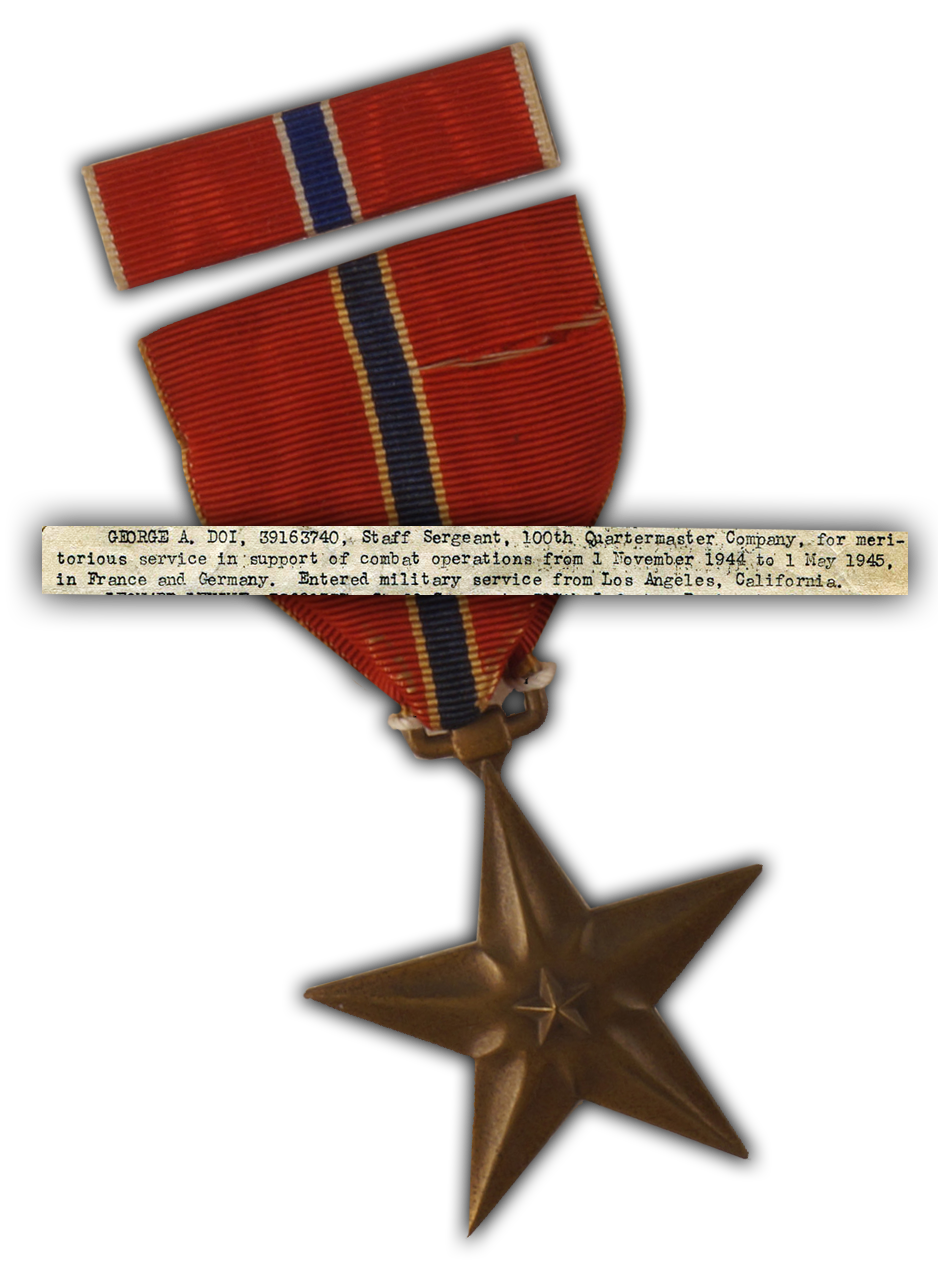
Bronze Star awarded to George A. Doi
In May 1945, George was recognized for his leadership, hard work, and character. He was promoted to second lieutenant.
This would be a rare instance during World War II of a Nisei being elevated to an officer over white soldiers, which captured the attention of US newspapers.
He was also awarded a Bronze Star Medal for his “meritorious service in support of combat operations.”
He is unquestionably the company’s best soldier.|Captain James Dougherty|commander of the Quartermaster Company
With the surrender of Germany, 2nd Lt. George Doi would contribute to rebuilding the devastated occupied country through his leadership and mechanical expertise.
He created a photo album to remember his experiences.

Photos of German Occupation, June-July 1945
As George was now an officer, Kathleen and baby Carole were released early from camp to resettle in Gardena, CA, where Kathleen's family had a thriving nursery business.
After completing his military service in 1946, George joined his new family and opened an auto repair business in the city. He and Kathleen went on to have two more children, Gary and Nancy.
Legacy
A perfectionist in all he did, George got the most joy out of fishing and celebrating his family’s accomplishments. Passing away in 1989, he was unable to physically be there when his granddaughter Kristi won the gold, but he was there in spirit.
I am certainly proud of my grandpa’s legacy. He stood for so much—hard work, resilience, excellence, and loyalty, to name a few. His legacy lives on from the values he instilled in my mom and what she has passed on to me and my brother and sister. ... It’s so important for future generations to know and remember the character that makes up our country.|Kristi Yamaguchi, Olympic Gold Medalist
Resources
To learn more about George A. Doi, visit Resources.
Credits
Photographs and images courtesy of the Yamaguchi family, the Department of Special Collections and University Archives, McFarlin Library, The University of Tulsa. Tulsa, Oklahoma, and Densho. The video interview was made possible by David Ono and Jeff MacIntyre.


